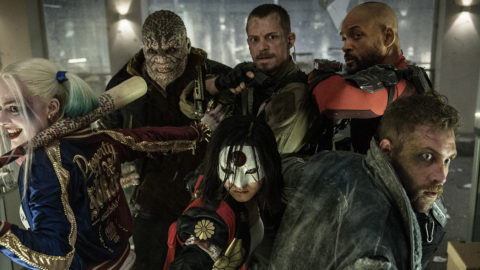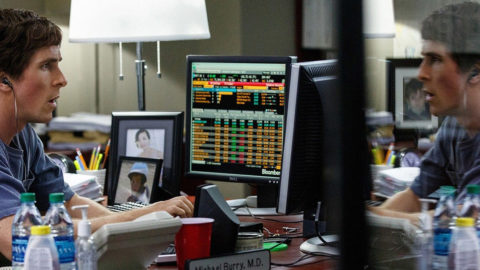Film of the Week: Birds of Prey
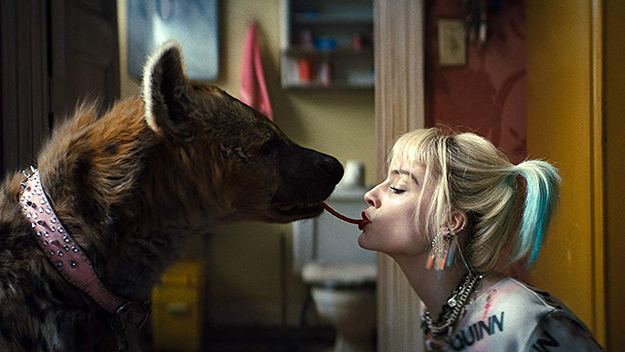
Birds of Prey, and the Fantabulous Emancipation of One Harley Quinn (Cathy Yan, 2020)
As a film reviewing tool, the term ‘it is what it is’ has come into its own with the superhero genre, but now and again you get a film with just a dash of idiosyncrasy to stand out from the crowd. Ultimately, Birds of Prey—to use the short title—may be notable above all for being brasher and brighter and more coherent than the universally-reviled movie to which it’s a kind of sequel, 2016’s Suicide Squad. But it exults in a vividly hued manic energy that qualifies it for membership of that select category: comic-book movies that actually look and feel like comic books. In this respect, it’s not as singular or as formally inventive as say, Spider-Man: Into the Spider-Verse, and it’s unapologetic about being as purely bubblegum as franchise movies get—although we’re talking the kind of joke-shop bubblegum that comes spiked with hot chili.
Essentially a vehicle for Margot Robbie, who also has a producer credit, Birds of Prey, and the Fantabulous Emancipation of One Harley Quinn, to use its full title (it’s that arch ‘one’ that just overdoes it), follows Robbie’s character Harley Quinn from the previous film. There she was the inamorata and partner-in-crime of Batman’s arch-enemy the Joker (not to be confused with the similar but not quite identical Arthur Fleck, a.k.a. “Joker”, the pop-culture-meets-art-house controversy magnet of 2019). This film begins with Harley, recently ditched by the Joker, going into a boozy, occasionally murderous heartbroken tailspin, but soon washing that man right out of her multi-coloured hair by facing up to life’s challenges. Foremost among them: outrunning the army of angry goons who know it’s open season on her now that she’s no longer together with “the Jester of Genocide,” to use one of his less salubrious titles.
Harley’s full emancipation, though, comes when she teams up with a gang of tough femmes to combat Gotham City gang boss and nightclub owner Roman Sionis, known as Black Mask (Ewan McGregor). Using assorted characters and plot threads from the DC Comics universe—including a rebooted Black Canary, a heroine going right back to the 1940s—Birds of Prey is pitched as a comics-movie equivalent of a Riot Grrl reunion, with its tough-as-nails female leads and a supporting cast of entirely reprehensible, largely disposable males. It’s seemingly targeted at a demographic of rebellious teenage girls whose lives were changed by discovering their mother’s L7 and Hole records, and to whom Harley will figure as a resounding Bad Example (she concludes one gag sequence with the comment, “and that’s why you should never partake in paying federal income taxes.” Whatever would the late Dr. Wertham say?).
Birds of Prey is a noisy, lurid, pop-art number in the in-your-face meta-smartass mode of the Deadpool films—although it’s not quite as relentlessly self-referential, and it does very well to ditch that residue of deep-characterisation sentiment that had Deadpool mourning for his dead girlfriend. In this film, Harley gets over her romantic sorrow by getting drunk, bashing up all comers and, in a grand symbolic gesture, exploding the chemical plant that was a key locale of her and the Joker’s trysting. Or, as Rosie Perez’s detective puts it, observing the spectacular firework display caused by the conflagration, “She publicly updated her relationship status.”
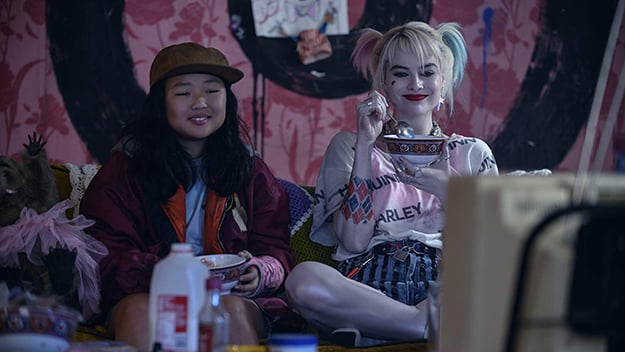
Scripted with such flashes of such juicy wit by Bumblebee writer Christina Hodson, Birds of Prey is directed by Cathy Yan, a Chinese-American filmmaker known for 2018 Shanghai-set comedy Dead Pigs. I haven’t seen Dead Pigs but it’s said to be pithy and anarchic, and Yan brings some of that spirit to Birds of Prey, along with a few Asian references that should make the film all the more sellable to the all-important Chinese market. A key character, young pickpocket Cassandra Cain, is played by 13-year old Asian-American actress Ella Jay Basco; at one point, she remarks to another character, “You’re not the only person who makes money off the dumb rich white people.”
Hodson and Yan muster some ingenious narrative shapes in the first third, with sequences backtracking and overlapping as Harley fills us in on the backstory in a speed-freaky New Jersey-accented babble. Her own history comes in a brief, retro-styled animation sequence which effectively establishes Harley as a cartoon character above all else—which essentially she has always been, having been introduced in an animated Batman TV series before being integrated fully into the DC repertoire.
The best parts of the film are the most cartoonish. When Harley walks into a police station disguised, for no obvious reason, as a 40s-style vamp in a crimson fedora—prior to blasting the place with smoke and glitter—I was reminded of that enterprising but misbegotten early-CGI hybrid of animation and live action comic book adaptation The Mask (1994). Birds of Prey benefits by not being quite as feverishly attention-craving, and Robbie is much more relaxed in her role than Jim Carrey was in his (stating the obvious, I know). She just seems to be having insouciant fun playing a character who’s much more like a blithe, goofy imp—with homicidal tendencies—than a human being. When she whips out a bracingly old-fashioned stick of dynamite, you realise that she really belongs more to the Looney Tunes universe than the DC Expanded one, while her punky rumbustiousness makes her a less androgynous version of Tank Girl, the British character whose 1995 movie outing was one of the woeful missed opportunities of comics adaptation.
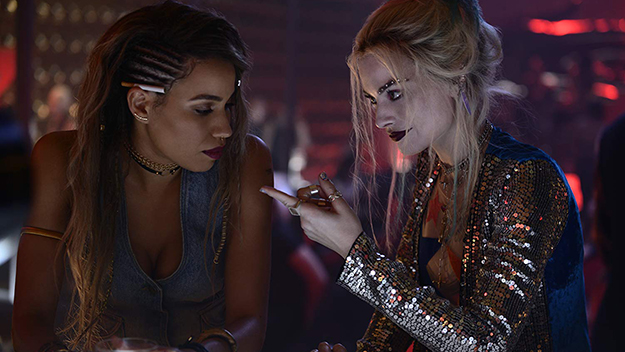
I say “less androgynous,” partly because Robbie’s manner and appearance make Harley Quinn overtly feminine, girly even: a sort of malign parody of a Disney princess. With her bouncy strutting gait, wonderstruck grin and zesty delight in her own witticisms, she’s a spiky revision of a well-known female movie stereotype—you could call her a Satanic Pixie Nightmare Girl. But she’s also curiously asexual, in a way that hasn’t always been the case in the DC illustrations. Where some movies have revolved around the delayed completion of an interrupted kiss, Harley’s drama ends with her reunited with the egg sandwich she loses at the start, having ogled over it with wide-eyed excitement.
Going about her business with goofy innocence, even when bashing people to a pulp, Robbie’s silver-skinned Harley is not really a woman at all, but a little girl in the body of a 29-year-old actress. She’s like a female Pee-Wee Herman, the film constantly playing up her pre-adult status: when she and the other women finally get together as a gang, she chirps, “Isn’t this fun—it’s like a sleepover! We should order pizza!” This pretty much nails the spirit of the movie: as a girl-gang romp, it’s essentially a sort of criminal Spiceworld, with Harley as Baby Crime and the black-clad Huntress as Posh Crime.
The rest of the cast—with the exception of the admirably sullen, no-bullshit Basco—have to make the most of cardboard roles. Mary Elizabeth Winstead plays the Huntress, a somewhat solemn-minded figure with a crossbow, gamely playing the poker-faced butt of a running gag about her superhero name; Jurnee Smollett-Bell’s Black Canary is a nightclub chanteuse and action high-kicker, first seen singing a rueful, ironic version of “It’s a Man’s, Man’s, Man’s World”; Rosie Perez’s Detective Renee Montoya is explicitly a variation on the hard-boiled action-adventure cop template, who speaks all the relevant clichés (probably the most paper-thin role Perez has ever played, but still she gives it pugnacious conviction).
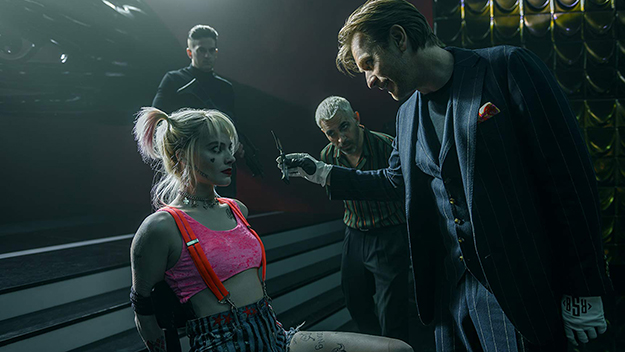
The film is a little schematic in its thoroughness covering all the post-#MeToo bases. All the female characters have been wretchedly treated by men, so have legitimate grounds for their sometimes outrageous actions (OK, Harley fed some goon to her pet hyena, but that only makes her more lovable). The men are universally wretched—except perhaps for the kind-hearted mafioso who trained the Huntress to be a ruthless killer. The only nice guy, an elderly Asian restaurateur—“like the Taiwanese grandpa I never had,” says Harley—turns out to be flawed too. As for Black Mask, he’s not only prone to sexual aggression—humiliating a woman in his club, prompting Black Canary to shed a single tear of angry empathy—he’s also an epitome of colonialist cultural appropriation, with his collection of African and South American memorabilia. As members of this city’s nightclub-owning criminal royalty go, alas, Jada Pinkett-Smith’s Fish Mooney—from TV’s Batman prequel series Gotham—could eat the poor boy for dinner. McGregor, for all his snarls and campy inflections, doesn’t quite have his heart in it and is still too candidly fresh-faced to convince as a thorough bad ‘un: it may be a while till he properly gets into his Terence Stamp tarnished angel phase.
Harley herself gets less anarchically deranged as the film goes on, and as she discovers the pleasures of sisterhood. The movie gets less fun too, settling into a conventional loners-fight-the-odds action mode. There are still plenty of visual pleasures to be had, in Matthew Libatique’s agitated camerawork and in K.K. Barrett’s production design, notably the Clockwork Orange look of the fairground funhouse (yes, an old abandoned fairground—suggesting a knowing debt to those live-action Scooby Doo movies). In general, Yan pulls out every jokey stop that she can, like scrawled captions identifying the reasons that characters are out to kill Harley (“GRIEVANCE: fed his brother to a hyena”), while one label gives up on words and opts for emojis instead (it had to happen sooner or later). The freneticism of the first third is nicely handled in a violent roller-rink episode and a manic shuttle around a nightclub, which ends with Harley joyously puking in someone’s handbag. There’s also a larky take on Marilyn Monroe’s “Diamonds Are a Girl’s Best Friend” routine, which feels like it only survived the cut as a ragged fragment.
Throughout all this—winking at the camera, blowing kisses, doing double takes like Fleabag never happened—Robbie is top value, even if she seems to be having more fun making the movie than anyone can be reasonably expected to have watching it. You only wish that the genre of screwball comedy was still extant, to do proper justice to her comic panache. She has it in her to be this generation’s Carole Lombard, although I don’t recall her ever toting giant-size sticks of Acme Dynamite.
Jonathan Romney is a contributing editor to Film Comment and writes the Film of the Week column. He is a member of the London Film Critics Circle.



